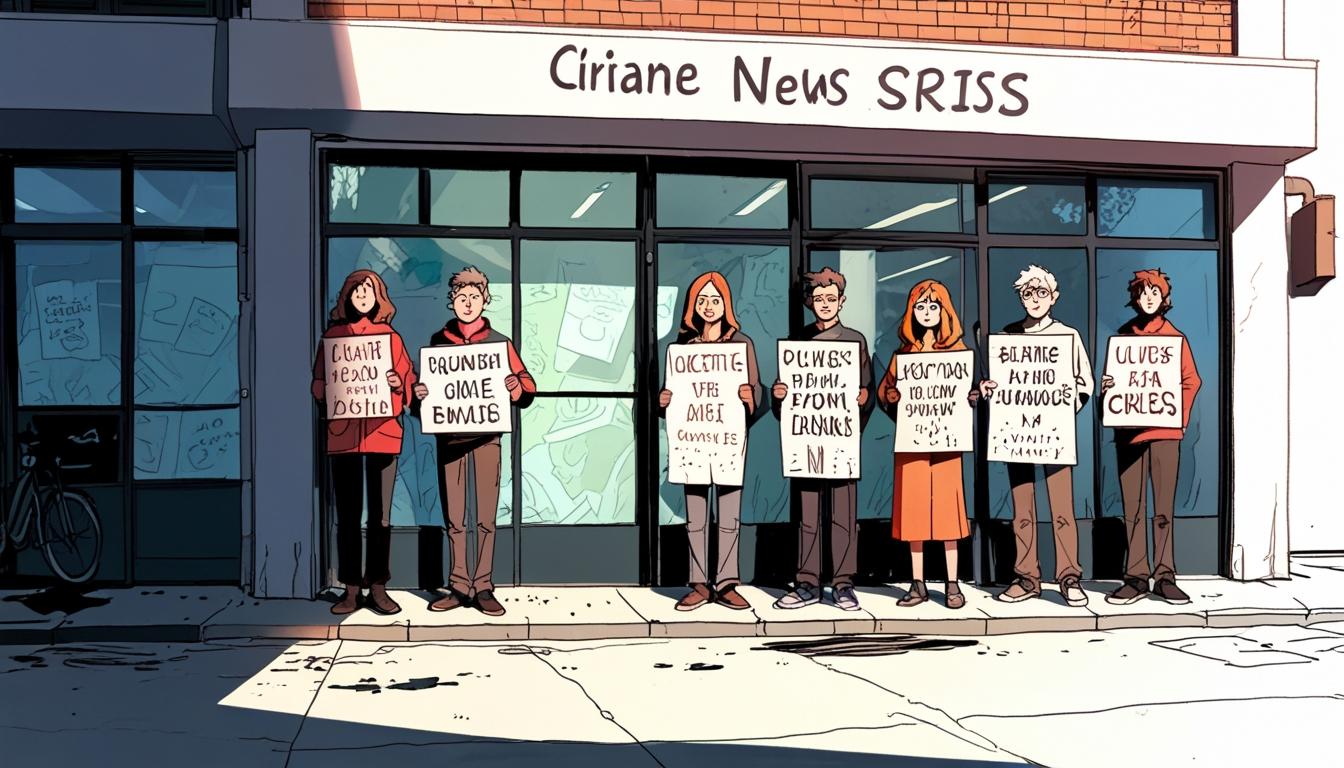Amid escalating climate crises and contentious political debates surrounding environmental responsibility, five individuals stand trial today at Southwark Crown Court after being accused of conspiracy to commit criminal damage at the London headquarters of News UK. These defendants assert that their actions—breaking windows and flyposting newspapers—were driven by a profound need to address what they identify as a significant failure in media responsibility regarding the climate emergency.
Commenting on the motivations behind their actions, Tristan Strange, a 42-year-old musical instrument designer, emphasised the role of major media outlets, particularly those under Rupert Murdoch’s control, in perpetuating misinformation. “Murdoch’s media empire is not informing the public; it’s actively misleading them,” he stated. This criticism reflects broader concerns raised by activists and researchers alike regarding the relationship between media representation and public understanding of climate change. The urgency of this matter is underscored by last year’s record-breaking UK heatwave, which the allegations suggest was underreported in favour of more sensational, light-hearted coverage.
The defendants argue that the newspapers in question, including The Sun and The Times, have engaged in a campaign of climate delayism, whereby critical information about climate risks and necessary actions is minimised or omitted. This is particularly pertinent given new research showing that right-wing media outlets, including those owned by Murdoch, have ramped up their attacks on government figures dedicated to climate action, labelling them with pejorative terms as part of a strategy that poses a threat to the future of climate discourse.
Caspar Hughes, an eco-auditor aged 53, articulated a despairing view of the media's current pathway. He claimed that it has become complicit in perpetuating a culture of misinformation, which endangers the very fabric of society and its response to the climate crisis. He noted that only a fraction of the UK population is receiving regulated, accurate information on climate issues, highlighting a substantial gap in public awareness that could hinder necessary collective action.
The actions taken by the defendants were not isolated incidents but part of a greater movement within Extinction Rebellion, which has previously targeted multiple institutions perceived as complicit in environmental degradation. This pattern of direct action has brought mixed reactions from both the public and the legal system. Recently, other protestors have faced acquittals in similar cases, underscoring a complex dialogue regarding the boundaries of effective protest and the legal implications of civil disobedience.
As the trial unfolds, it draws attention not only to the defendants’ motivations but also to the broader implications for media accountability and systemic responses to climate change. The interplay of activism, public discourse, and legal ramifications paints a troubling yet vital picture of the current climate movement’s landscape, where the stakes could not be higher.
In a climate marked by urgency, where the ramifications of inaction can no longer be postponed, these five individuals assert that their radical actions reflect a desperate call for truth—a reflection of a society poised at the crossroads of potential catastrophe versus proactive, informed engagement.
Reference Map
- Paragraphs 1, 2, 3, 4, 5, 6
Source: Noah Wire Services
